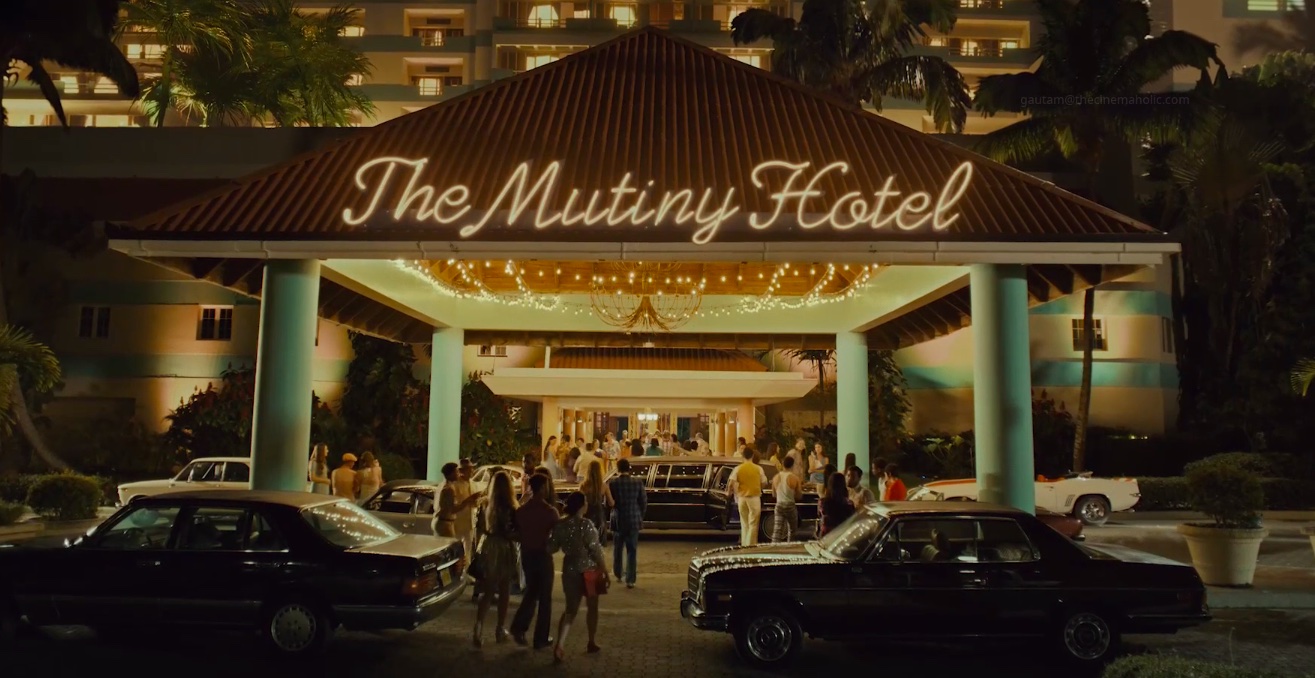MGM+’s ‘Hotel Cocaine’ takes the audience to 1970s Miami, when cocaine had broken into the narcotics market, and criminal outfits were pouring their money into the business to make unbelievable amounts of money out of it. The show, however, begins with a working-class man trying to provide for his family in an increasingly unstable world. His connection to a cocaine smuggler brings him on the radar of the DEA, and this throws him into a world that he never wanted to be a part of. In between all this, his connection to Hotel Mutiny also serves as an important plot device. Interestingly, the hotel is one of the few real things about the story.
Hotel Mutiny was Infamous for the Crowd it Hosted
There is The Hotel Mutiny located at 2951 S. Bayshore Drive in Coconut Grove, but in its current form, it is nothing like the image projected in ‘Hotel Cocaine.’ The place has gone through quite a transformation in the past few decades, but in the late 70s and early 80s, it was a den for people from all sorts of places to come together to have the time of their lives. Called Studio 54 of Miami, Mutiny opened in 1971 as a private club, but by the second half of the decade, it had earned a notoriety that eventually led to its downfall, leading to the club being closed in 1985.
What made Mutiny so infamous was the crowd it invited into its quarters. From big-time drug dealers and smugglers to CIA officers, from lawyers and money launderers to famous actors and singers like Crosby & Nash, Fleetwood Mac, and Led Zeppelin, among others, you could anyone and everyone at Mutiny. The hotel was known for its themed suites like the Bordello Room, Gypsy Caravan, and Hot Fudge, offering something for everyone. At the time, it also became the biggest seller of Dom Pérignon, which was often poured in the bathtub for the guests to bathe in. Reportedly, the champagne was in demand so much that when the hotel ran out, they would send the staff on a private plane to get more from other cities. Due to the nature of its business, so much cash was said to have flown in that they would send armored trucks with cash to the bank.
Hotel Mutiny’s connection to people in the criminal world and the chaos it harbored within its premises eventually led to its infamy turning bad. Financial troubles started to show up, and following a series of bad financial decisions, which had piled up over the years, the place eventually closed in 1985. The developers who got their hands on the property decided to completely change the aura of the place by turning it into a residential property, but things didn’t move so fast.
The place sat abandoned for about a decade until it was bought over by a different developer in 1996, who finally started renovating the place, with the hotel reopening in April 1999, but this time with a completely different vibe. The renovators wiped away any trace of the hotel’s cocaine-tinged history and turned it into something much more respectable, which could be approached by the general public without the worry of running into someone with a dangerous background.
Hotel Mutiny’s Reputation Attracted Hollywood to It
The infamy of the club brought it to the attention of Oliver Stone and Brian De Palma, who stayed at the place and eventually decided to make a movie called ‘Scarface.’ For authenticity, they wanted to film the movie at the hotel, but its own, Burton Goldberg, refused. The filmmakers had to turn to Southern California to make a similar structure, which appears in the film under the name of The Babylon Club. To get the cast a better sense of the story, they were also encouraged to go and check in at the hotel. Something similar also happened with ‘Miami Vice,’ with its creators spending a lot of time studying Mutiny to inform their show, its storyline, and its characters. The location is also referenced in Netflix’s ‘Griselda.’
In ‘Hotel Cocaine,’ Mutiny is recreated to look as close to the original place. The show wasn’t filmed in Miami, and with the real location now turned into a residential area, the idea of using the original location was out of the picture. Instead, they went to the Dominican Republic and recreated sets in studio lots to create a version of Mutiny. They also recreated the $75 metal membership card with the winking pirate logo embossed on it. Because the location is so critical to the show, they made sure that it felt as real and believable as possible to the audience, as it becomes more of a character than a passive location with a significant impact on the fate of the characters.
Read More: Best Movies About Drugs on Netflix

